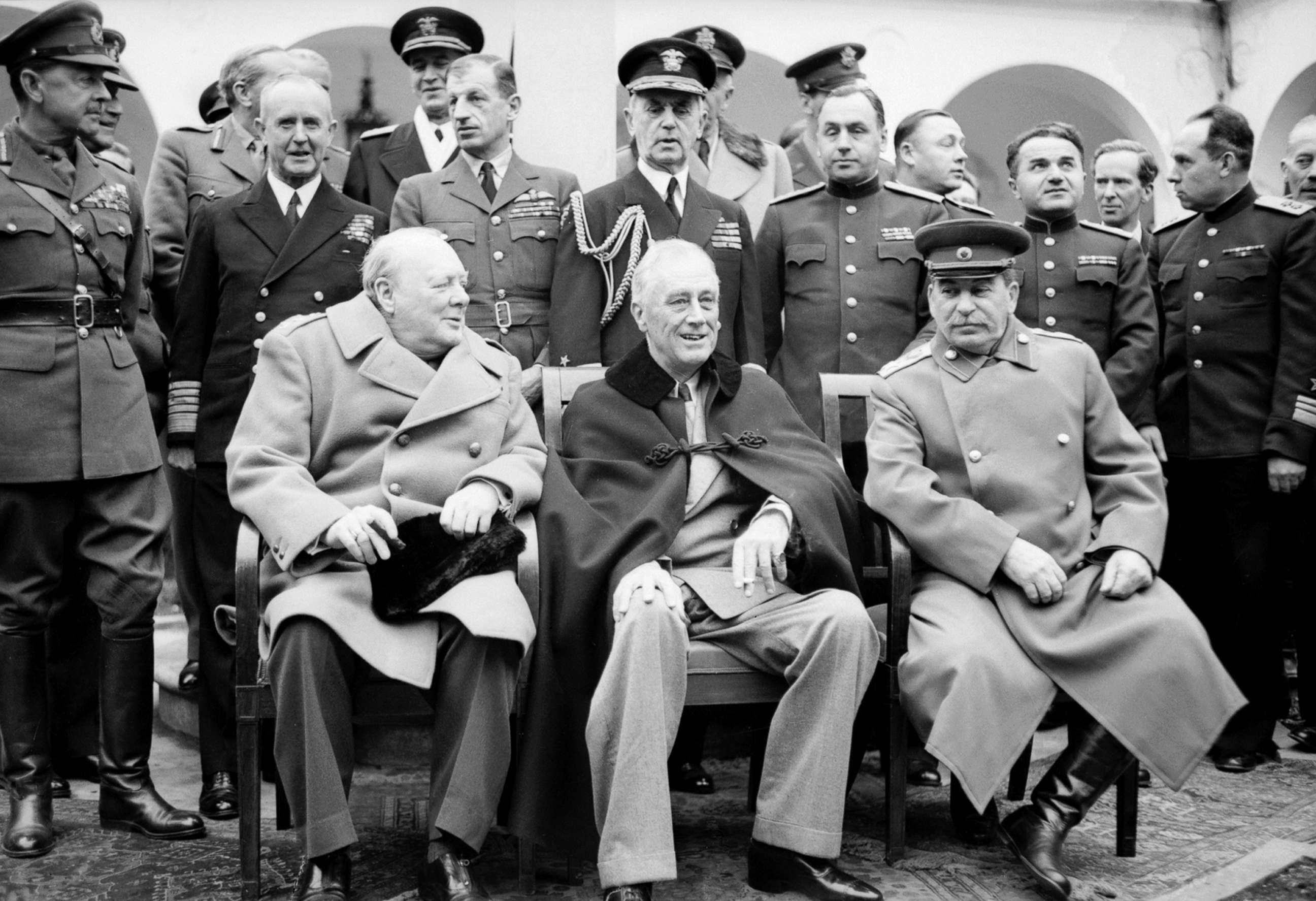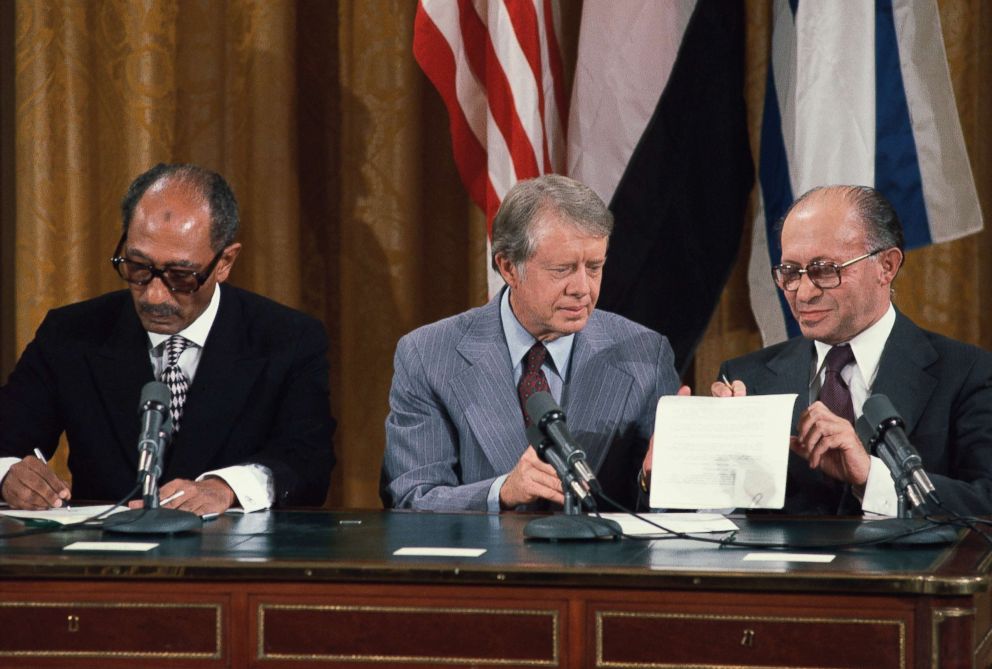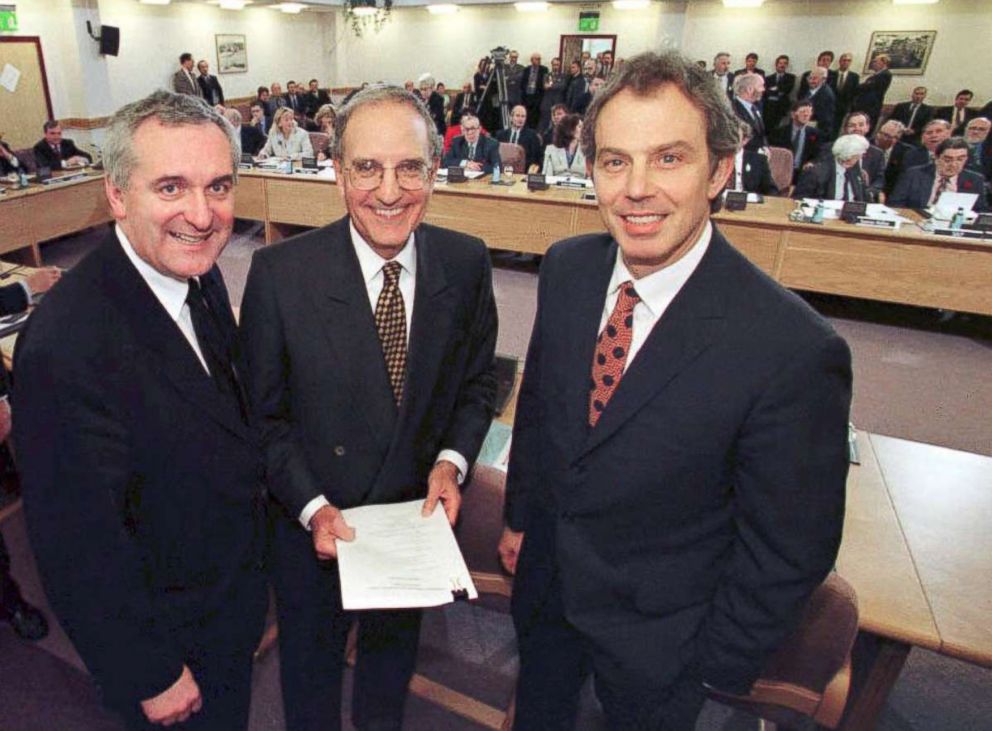Will the North-South Korea talks be more successful than these historic summits?
The 20th century saw many important summits, but not all led to lasting peace.
President Moon Jae-in of South Korea and North Korean leader Kim Jong Un met on the border between their countries amid hopes the talks could lead to a formal end to the Korean War, or the beginning of a plan for denuclearization of the Korean peninsula.
With the promise of peace talks ahead, here is a look at five major summits in recent history, and how effective they were – or were not -- at creating and maintaining peace.
1945: The Yalta Conference
President Franklin D. Roosevelt, Prime Minister Winston Churchill and Soviet Premier Joseph Stalin met in what is now Crimea to hammer out the end of World War II. The leaders agreed to demand unconditional German surrender and began planning postwar control of Germany and the Pacific theater.
In exchange for Soviet help on the Pacific front, it was agreed that the Soviets would gain a sphere of influence in Manchuria after Japan’s surrender.

Roosevelt, Churchill and Stalin also agreed Germany should pay war reparations, and that France should be involved in governing Germany along with the allies. The parties agreed to voting procedures in the future United Nations Security Council, including the veto for permanent members.
According to the State Department’s Office of the Historian, the initial reaction to the agreements was hopeful that the U.S.-Soviet wartime cooperation would continue in the postwar world. But with the untimely death of Franklin D. Roosevelt, U.S.-Soviet relations broke down under the Truman administration, ushering in the Cold War. Many of Roosevelt’s detractors today criticize the president for “handing over” Eastern Europe and Northeast Asia to the Soviets, according to the Office of the Historian.
1973: Paris Peace Accords
Despite President Richard Nixon’s goal to bring a quick end to the Vietnam War, he became mired in a stalemate on the ground and in diplomacy.
As Nixon began to draw down U.S. forces in Vietnam, public peace talks were ongoing in Paris. But it became clear no progress was being made in those talks, so Nixon dispatched his Assistant for National Security Affairs, Henry Kissinger, to meet secretly with North Vietnam Politburo member Le Duc Tho for the first time in 1969.
The negotiations continued for three more years as the ground and air war dragged on. Nixon pressured South Vietnamese President Thieu to accept an agreement, and the Paris Peace Accords were finally signed in early 1973.

However, both North and South Vietnam violated the terms of the treaty, and the United States did not intervene to stop the violations. Violence continued until 1975 when North Vietnam captured Saigon to end the war.
1978: Camp David Accords
Egyptian President Anwar Sadat and Israeli Prime Minister Menachem Begin met with President Jimmy Carter for 13 days at presidential retreat Camp David in Maryland to produce the first peace treaty between Israel and one of its Arab neighbors.
Israel agreed to return the Sinai peninsula to Egypt, Egypt opened the Suez Canal to Israeli ships, and a process for Palestinian self-government was created. Sadat and Begin shared a Nobel Peace Prize for the effort.

However, in 1979, crises in Iran and Afghanistan demanded much of President Carter’s attention, and subsequent talks between the Egyptians, Israelis and Palestinians did not produce the same level of cooperation.
1993: The Oslo Accord
A handshake between Israeli Prime Minister Yitzhak Rabin and Palestine Liberation Organization leader Mahmoud Abbas in the Rose Garden at the White House, overseen by President Clinton, is the iconic image marking the first Oslo Accord.

The secret talks started in Oslo, Norway, and led to a signed declaration on Palestinian self-government. President Clinton actually played a limited role in bringing about the first agreement, but his administration invested vast energy in the ensuing talks.
Unfortunately, by the end of Clinton’s administration, violence had broken out again in Israel and Palestine, eventually leading to the Second Intifada.
Secret talks on Israeli-Palestinian peace that began in Oslo, Norway, led to a famous handshake between Israeli Prime Minister Yitzhak Rabin and PLO chairman Yasser Arafat, overseen by President Bill Clinton. The Accord provided for the creation of a Palestinian self-government and withdrawal of the Israeli Defense Forces from parts of the Gaza Strip and the West Bank. But the Accord, and future agreements, would eventually fail with the outbreak of the Second Intifada.
1998: The Good Friday Agreement
For a 30-year period known as The Troubles, conflict roiled between those who wanted Northern Ireland to become part of a united Ireland and those who wanted to remain within the United Kingdom. Those two groups also split largely along Catholic-Protestant lines. Violent attacks left thousands of citizens dead.

Finally, with the help of U.S. envoy George Mitchell, sent by President Clinton, British Prime Minister Tony Blair and Irish leaders Sinn Fein and Bertie Ahern acknowledged Northern Ireland as part of the UK, but established a principle of consent to allow citizens to vote for a united Ireland.




